The last days of April sees the garden in full flow and is one of my favourite times in the garden , all vibrantly green and a complete contrast to the last few months of winter but of course the weeds are also vibrant and in full flow !
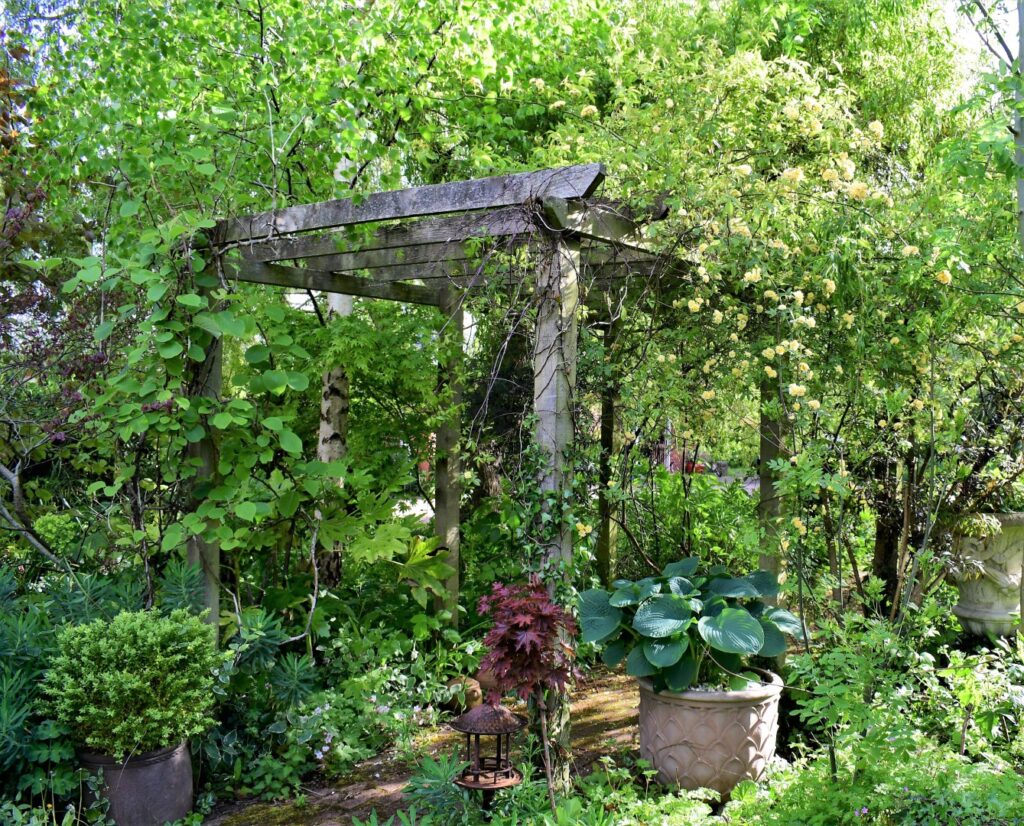
However just in case we get carried away with ourselves the weather in March over a few days was … well , March weather and there was snow , not Balkan but enough to cover the back garden chairs for a photo !

Fussy gardeners , there are a lot of them about , consider as a weed anything they haven’t planted themselves so any self seeder is ruthlessly dug out from their regimented borders which is a pity as they miss out on some delightful plants … gardening says a lot about your personality which is why wild gardening does not suit a lot of people especially those who want total control .
While not saying I am uber relaxed ( that noise in the background are my kids scoffing ) I am not uptight about weeds and leave the odd clump of nettles and docks untouched for the butterflies but I do have my moments and the weed I absolutely hate and have zero tolerance for is the creeping butter cup , total war is my approach with ranuculus repens as it will take over large areas in no time at all if left unchecked and there is no easy way to get rid of it apart from carefully digging out each root as otherwise it spreads relentlessly
The butter burr or petasites although a herb that has been used medicinally since the Middle Ages to treat migrane is classed as an invasive weed especially in wet ground but I use it here to cover areas of heavy marl soil and in dry shade that won’t grow much else and I actually like the plant as it forms a nice carpet of evergreen leaves and pink flowers in Spring and unlike the creeping butter cup it is easily controlled with a whack of a spade and just this week I transplanted some butter burr into an area in the new water garden where the soil is permanently cold and marly .
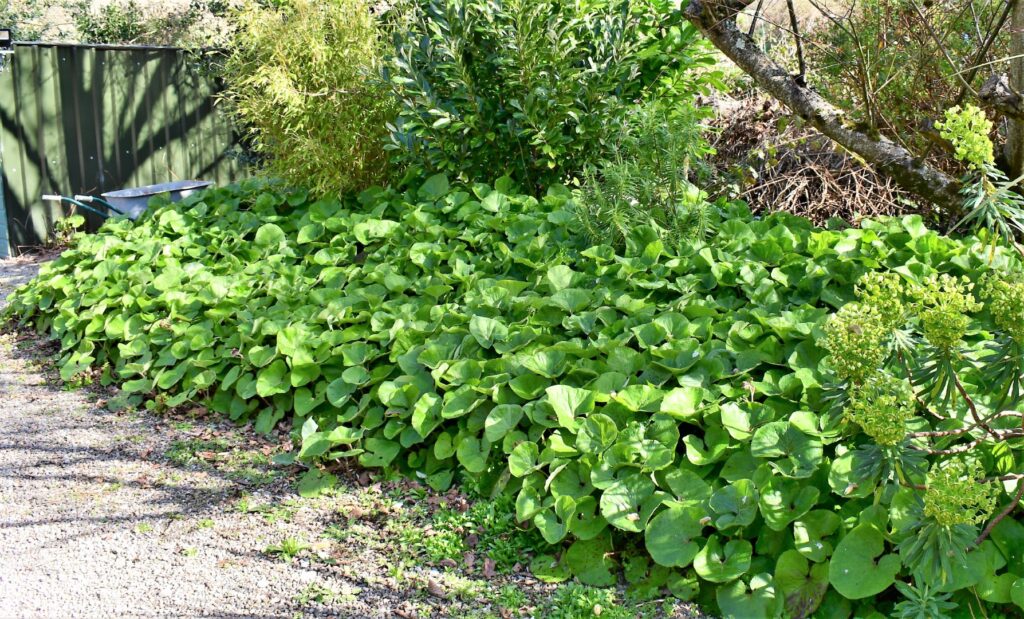
Along the East coast of the US the American skunk cabbage is considered a vicious weed as it colonises huge areas of lakes and rivers but in Ireland and the UK it is a prized architectural plant with beautiful yellow bracts first then followed by huge paddle size leaves .
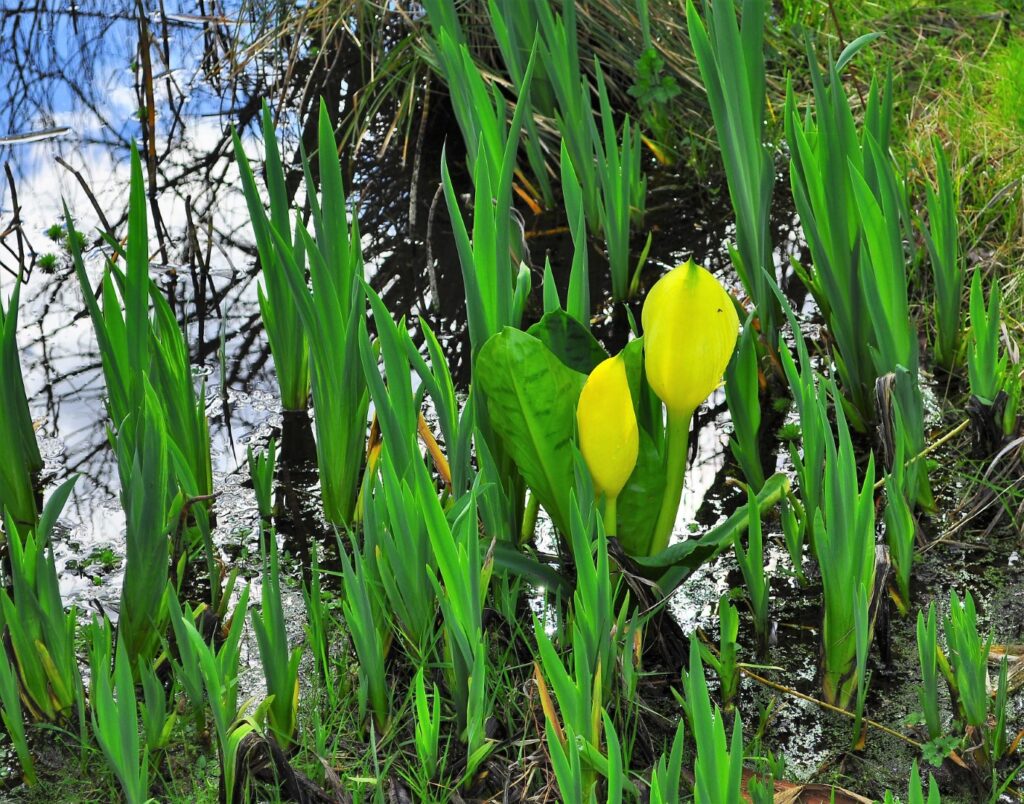
The flowers of the american skunk cabbage are fabulous but these are followed a few weeks later by spectacular leaves over a metre high .
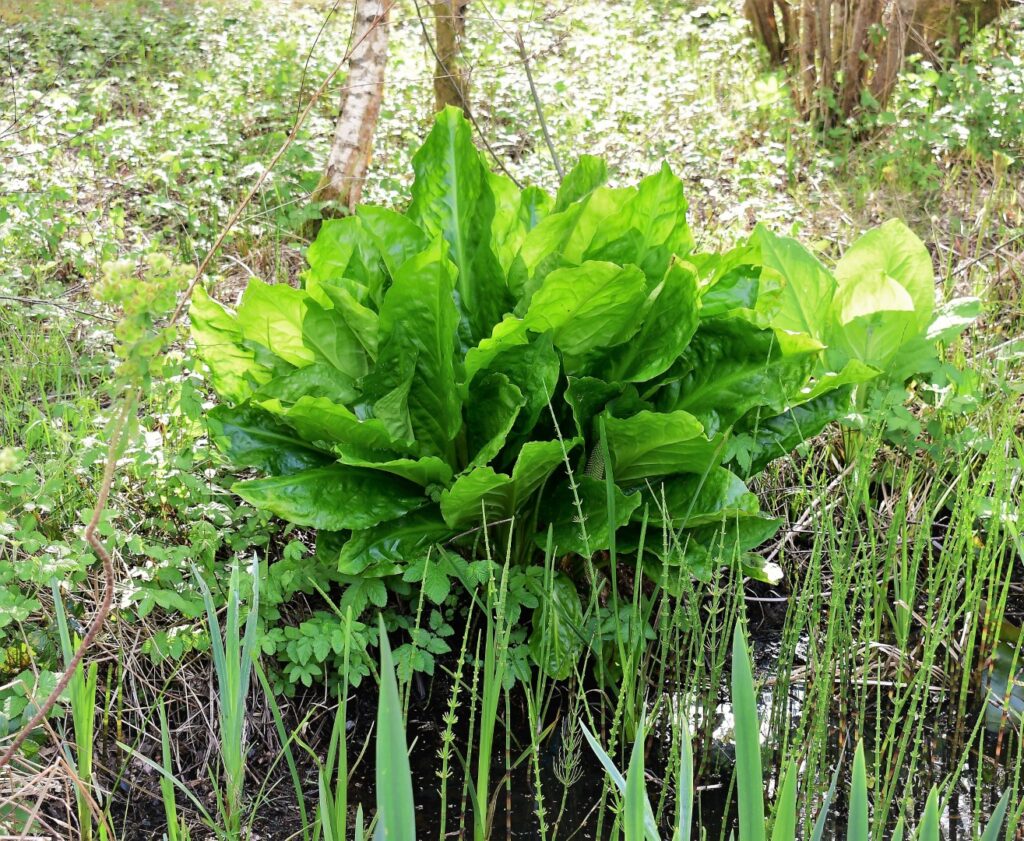
A wild plant I really love to see in early Spring is the lesser celandine , ficarnia verna , a member of the buttercup family which pops up in unexpected places , small compact vivid green leaves in small clumps with gorgeous yellow flowers and after it finishes flowering it’s socks off it dies back into the soil not to be seen again until next year when it will faithfully reappear in the same spot … usually in damp places especially in woodland but I have this pot reserved for hostas and the lesser celandine decided a few years ago this was to be it’s forever home !
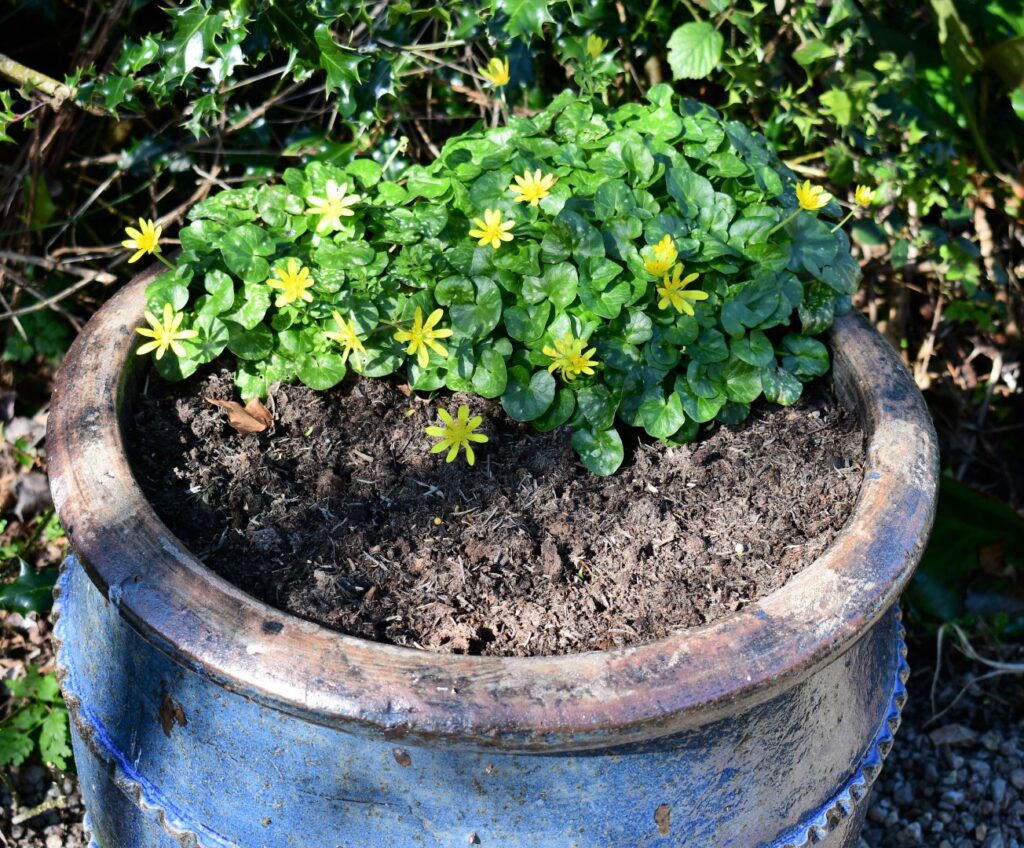
I spent a few weeks in Croatia in early April mostly gardening and while Snezana concentrated on pruning the olive trees I concentrated on clearing … you guessed it … WEEDS ! I am only now getting to know and recognise mediterranean weeds as most of them look like wild flowers to me but the really deep rooted ones I can now identify and tackle by digging them out by hand and after four years intensive weeding I have managed to get the gravel garden relatively clean .
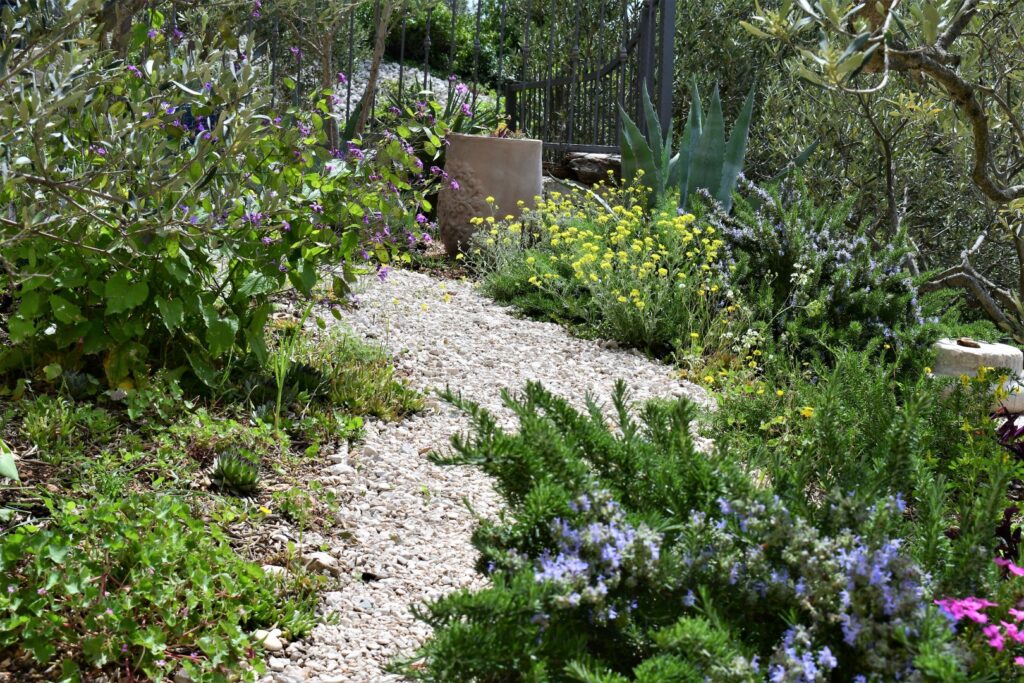
The annual honesty or lunaria is an old fashioned cottage garden plant at home and to be “honest “ nothing special and mainly grown for it’s silver translucent seed pods which are used a lot in flower arranging but along the Adriatic it is considered a weed but what a show it makes , growing wild to over a metre and draped in purple flowers for weeks it is a stunning plant and I will let it self seed around the garden in Croatia .

We got a master class in pruning olive trees from Mate , a long time friend from Makarska as March / April is the time for pruning just before growth happens and we have a balancing act here about pruning olives as while I would like to have the best possible crop of olives next October I still want to have the trees looking good and not too scalped and overall it is the look of the trees I am more interested in … still we managed a compromise and removed all crossing branches plus an upright branch from each tree .
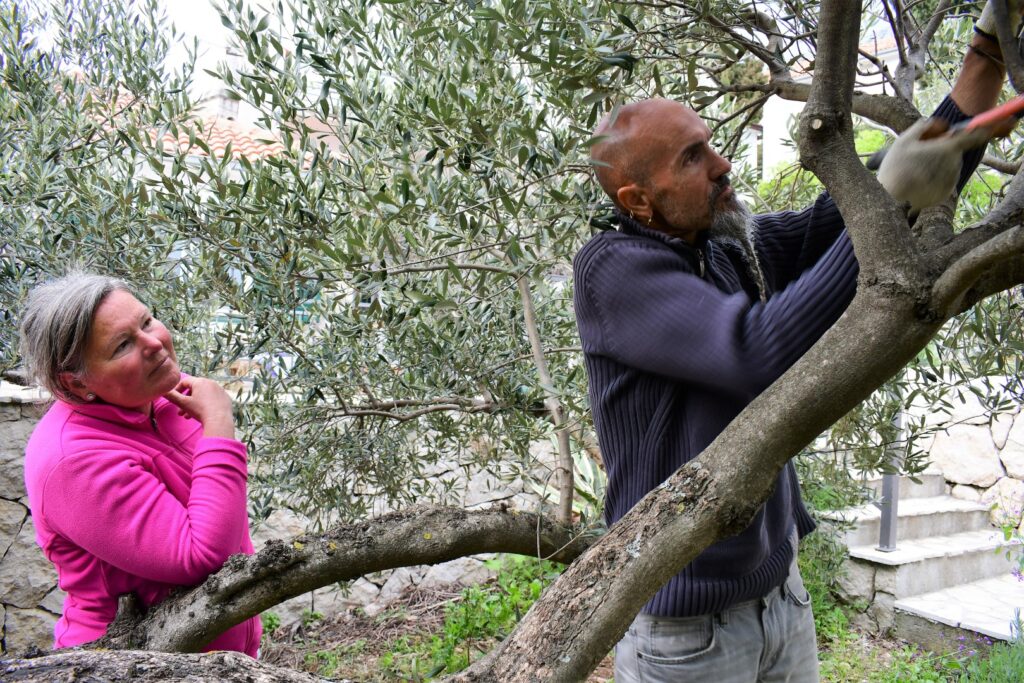
Snezana has taken over responsibility for pruning the olive trees which makes sense as it is in her Macedonian DNA in Bittola where the region is famous for it’s wines and olives being only 8 km from the Greek border however I felt her comment that “ you pixie Irish have cabbage in your DNA but we have olives “ was unnecessary !

We also took delivery of twelve 25 kg. bags of goat dung and spread it around the base of the mature olive trees … personally I remain unconvinced about the efficacy of this and think you would need to layer it at least six inches thick right out to about two metres from the base of each tree but that would take a truck load and two or three marines to heft the bags around the garden … but even this small amount makes you feel good to be feeding the trees .
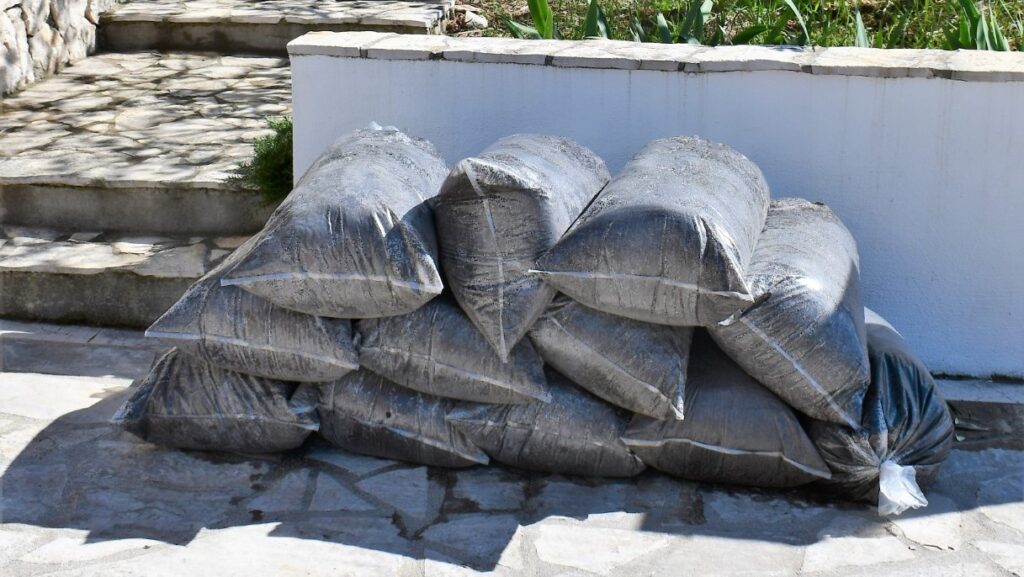
I replaced a container of house leeks ,semper vivums , and this time tried a new approach as I have never had success with these reputedly easy alpines and I think the reason is that I planted up their containers over the years with too much compost so this time I used mainly gravel and a bare minimum of compost mix , time will tell.
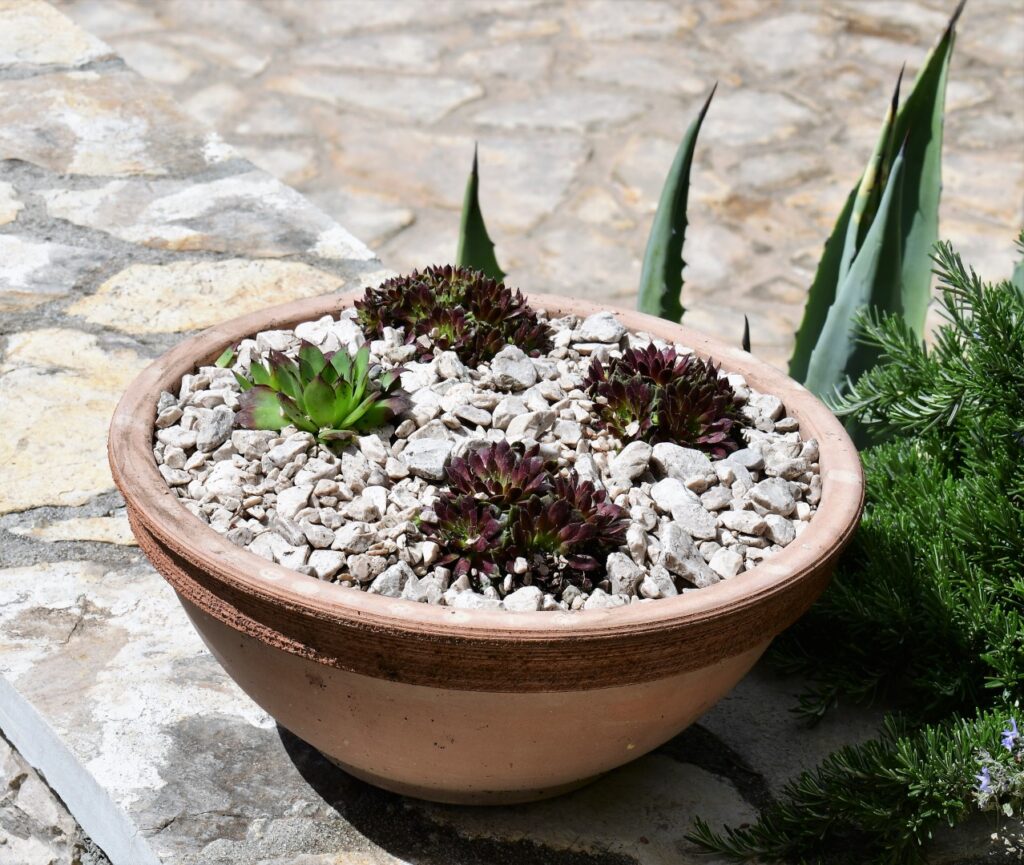
For the past five years I have been digging up wild iris’s around the hill sides above Gornja Podgora , not wild in the real sense of the word but iris’s that over the years since the villages were deserted after the major earthquake of 1962 have escaped and self seeded from their original small dalmatian cottage gardens which were once lovingly planted and maintained . These are Adriatic iris’s that thrive in the baking summers with their tubers mostly over ground attached by fine roots to the earth and are both easy to dig up and take almost 100% to their new locations … gardening is forever .
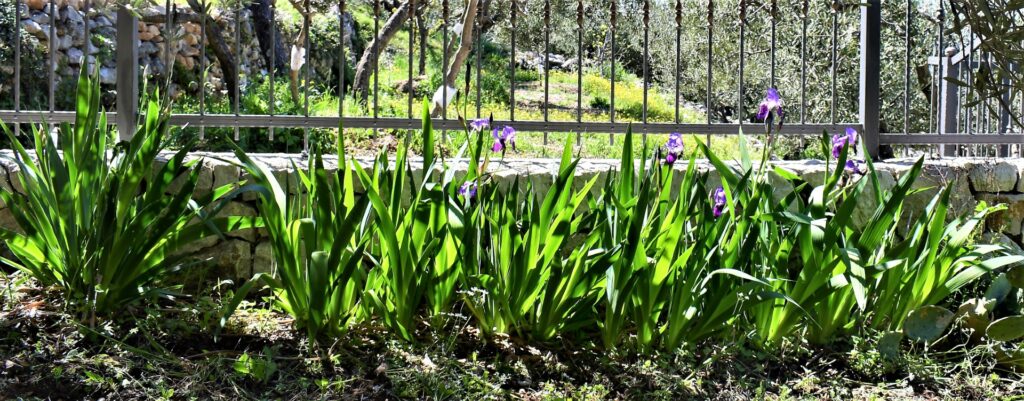
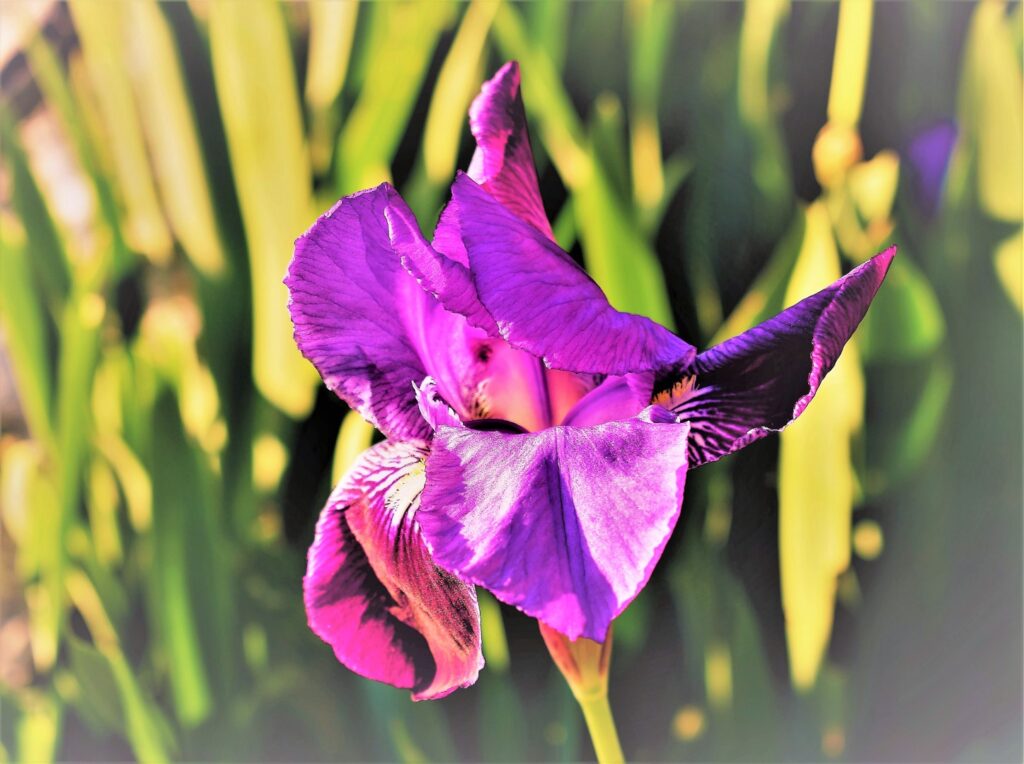
Croatia was as beautifull as ever in the April weather and the alpine plants I planted up last October in the new pots on the terrace have thickened up really nicely .
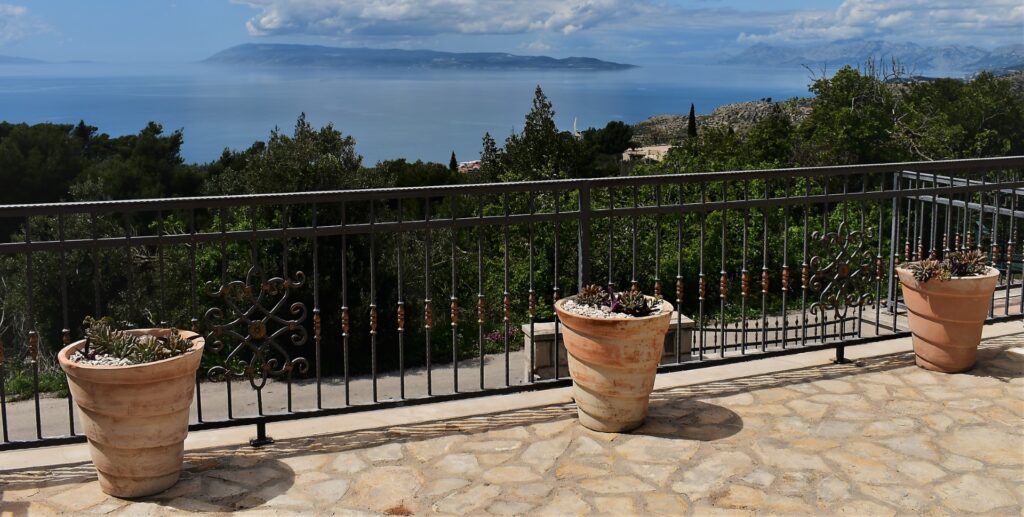
It is Hosta time again back home in the garden at Old Spa Road and absolutely vital to protect against slugs who regard hosta leaves like caviar otherwise your leaves will be ragged and ravaged looking for the entire growing season . Clonmel Garden Centre have a great selection of hostas on sale at the moment including my favourites , Francis Williams and Gold Standard which can be difficult to source as the US bred hybrid hostas with exotic names have taken over the market and as I just needed one hosta for a new pot I am planting up I found myself in a position I never thought I would be in where I opted NOT for Francis Williams which has always been with Elegans my absolute go to hosta . However this particular location for the new pot was in full sun and Francis Williams although great in part shade can look a bit brassy in full sun … also I have Gold Standard in a pot opposite the new one so Gold Standard it was .
I have been growing Elegans and Francis Williams for forty years , they are big leaved hosta sieboldiana varieties originating in Japan and both were bred in the UK in the 1930’s whereas I have grown Gold Standard for only the last five years … Gold Standard was first bred in the US in 1976 and was so sought after that it cost 85 dollars a plant when first on the market .
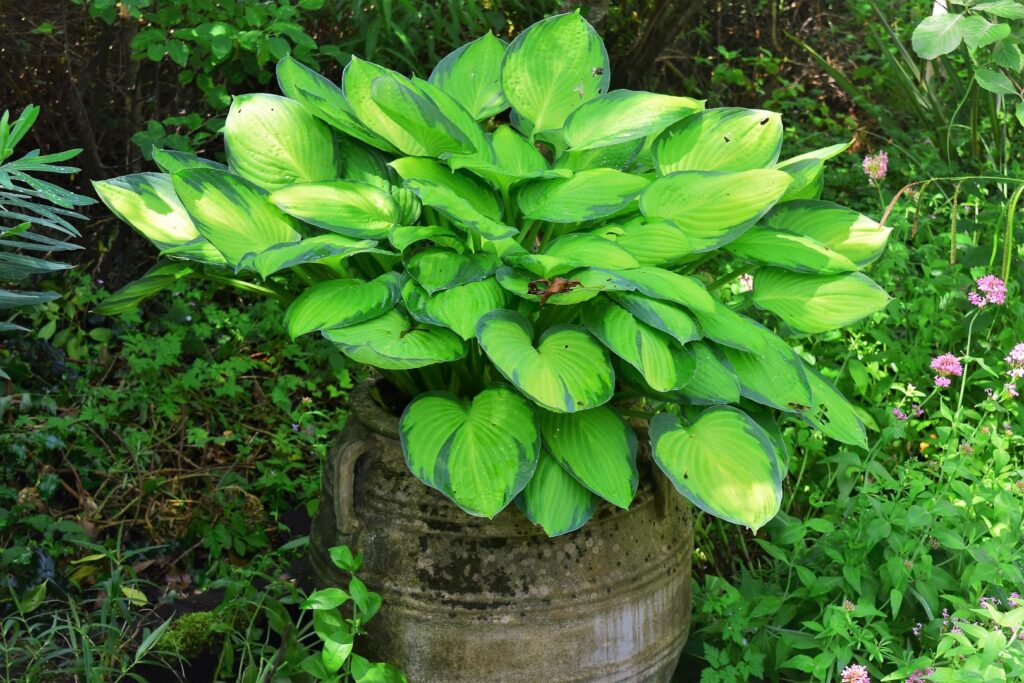
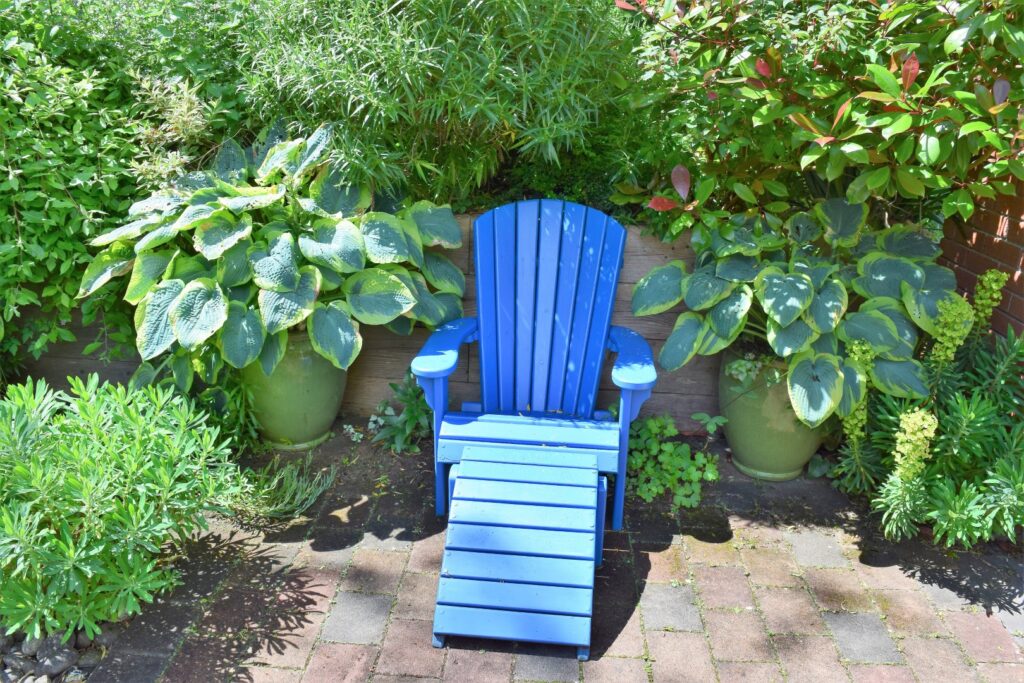
During my visit I also bought a hosta reputed to be both the finest hosta but certainly the largest , Hosta Sum and Substance ,which in the US grows to almost a metre high and two metres wide , a hybrid it was first bred in the US in 1980 but there is huge controversy in the American Hosta Society as to who first bred it and from what hosta parents it came from … I will be happy if it grows well here in the Water Garden if I can protect it from the slugs and the deer .
While mowing the grass this week in shorts and T shirt conditions in the Lower Wood area I was reminded of how cold and miserable it was working there in January and February … but when writing about those months at the time I was enthusing of how lovely it was to be out in the weather … why did no one take me aside and ask are you living in the real world at all and that this was no weather for man or dog to be out in … in Clonmel Garden Centre this week I was discussing plants with Lynda , a trained horticulturist who grows her own veg garden which she works along with the day job and she was saying she gets up every morning at 5 am to water the veggies in large tunnels before coming to work officially and when I said tunnels are huge work she said “ but I love it ” and of course that is the key to being a good gardener , you need to love it … of course it also helps if you are a little bit crazy also !
It was cold and miserable in March and letting me out in this weather must qualify as some sort of elderly abuse ? !
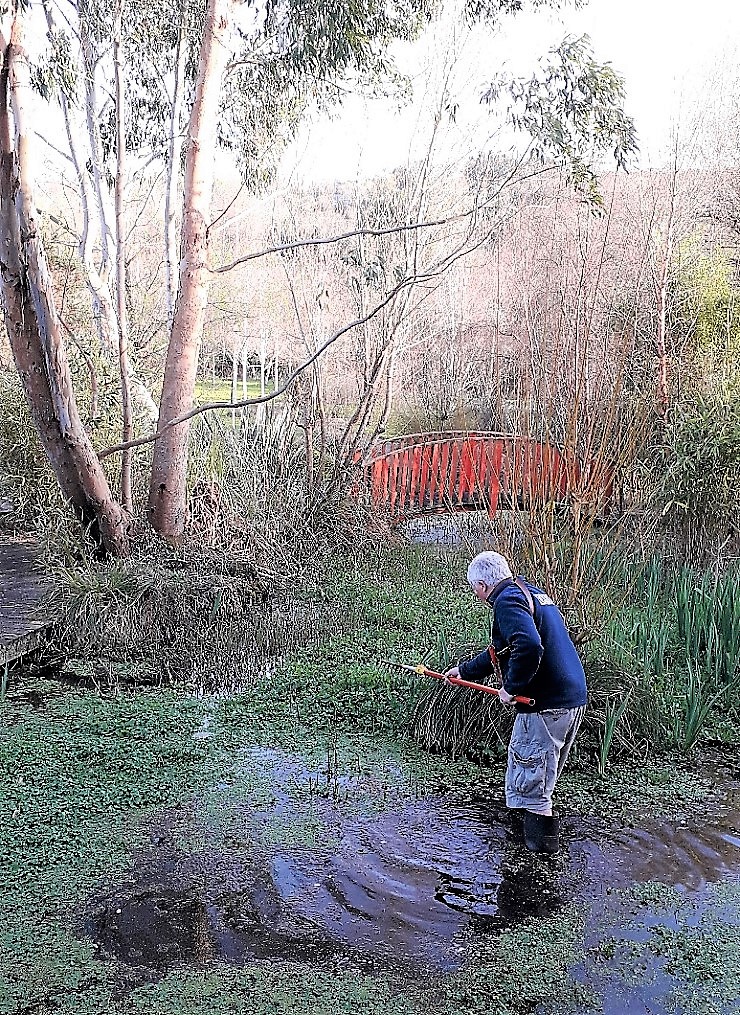
After my post in October about olive growing in Croatia and our experiences in picking the olives and having them processed at the local Mill in Podgora I was asked to write about the project by the Editor of Grist to the Mill , a quarterly magazine devoted to the history of Mills and Millers in Ireland . The article was published in the March edition and the following extracts give a flavour .

“The olive trees had not been given much individual attention for over twenty years and had gone quite feral so we embarked on a two year programme of pruning and feeding during which we didn’t get much of a crop .
We have added five extra trees since then , an olive tree takes up to six years in the ground to produce a first crop of olives but trees can live almost forever and I have seen olive trees in Israel which are over five thousand years old. We pruned the olive trees hard that first year , kept them weed free and spread organic waste under them and each year we now layer the ground with bags of sheep and goat manure sourced locally from the farmers on Biokovo mountain , smells to high heaven but pure luxury for the olive trees with the result that production has increased from eighty kilos two years ago to almost double that this year .
All Dalmatian people have olives in their DNA and anyone you speak to has an opinion and is extremely knowledgeable and helpful . One thing we have changed is the pruning of the olive trees as there is a different tradition in Croatia due to the mountainous terrain where the trees need to be hand picked and over the generations pruning has been designed to keep the trees bent low and easier to pick from a standing position but we prefer the classic Tuscany look with the olive tree growing into a nice wine glass shape and so we are pruning and training our trees to grow upwards … all the better also to drape fairy lights over the branches around an outdoor dining table !
I have always thought that dining al fresco under olive trees was the ultimate in cool and I remember back in the 1970’s sumptuous photographs in a book by Terence Conran about his house in Provence , all natural stone floors and olive trees and while my life style and wherewithal differs from Terence’s quite a bit still we have olive trees in common !
Growing up in the Ireland and UK of the late 1950’s and early 1960’s olive oil was mostly unknown in cooking or eating terms and my first introduction to it would have been with an ear ache where my Mam would have a little bottle bought in the local chemist’s shop and heated oil would be tipped with a spoon into your ear which was then topped off with cotton wool to keep it from running down your neck … olive oil for salads was unheard of in Ireland when I was growing up and we used Chef Salad Cream for salads which we considered very posh and on my first trip to Greece in 1974 I was horrified by the amount of olive oil that came on all our Greek salads and I remember once in Delphi going into a restaurant kitchen to say go easy on the olive oil only to see a black dressed Granny upending a bottle of oil onto my salad and hearing the bottle go glug glug … she gave me a look that stopped me in my tracks that said don’t mess with the Nana … I have embraced olive oil ever since !
Beautiful as sitting under olive trees is I didn’t expect the experience that harvesting your own olives brings , how involved you become , how lovely your own olive oil tastes and more to the point how little yield there is from olives as from 150 kilos of olives you get only 20 litres of oil . However we are delighted with our current yield but this will increase when the five extra young olives trees we planted come on stream .
Our local olive mill is in the lower village , a modern mill with a very efficient procedure which over an eight week period from mid October onwards works on a 24 hour basis and the entire village area is humming with both the collection of olives and the olive oil processing . As I said today’s Podgora Olive Mill is modern with gleaming state of the art machinery but attached to the modern premises is a museum with all the old fashioned equipment and mill stones , old sepia toned photographs from the early 1930’s showing the olive oil harvest in those days .
The old photographs show all weather beaten happy faces but don’t be fooled by the happy faces as olive harvesting then as now is back breaking work and a failed harvest could be disastrous for the economy of local families .Traditionally the olive oil produced was for each family’s private consumption and a small amount was sold to tourists at local markets but in the past twenty years Croatian olive oil , still mainly picked with traditional methods , has become a thriving commercial industry regularly winning gold medals in international competitions around the world .
It took us two full days to collect the olives , we hand picked every one and if an olive dropped on the ground it was discarded but having seen the quality of what neighbouring pickers included in their baskets and which they have been doing for generations we won’t be so picky next year .
Mentioning next year illustrates one of the perils of growing olive trees is that there can be an attack across entire regions of olive fly , a little black fly that burrows into the olive that can destroy an entire crop and last year for example there was no olive oil harvest throughout Dalmatia … commercial growers can spray against the olive fly but rarely in Dalmatia as olive trees are largely family owned and people there are very organically minded , don’t like using commercial sprays and it is not unusual for families to own up to 300 olive trees spread in small pockets across several locations … they are also very proprietorial about who owns what and you daren’t touch an olive that isen’t yours , very Sicilian !
Picking olives like picking grapes may sound romantic and artisan but make no mistake it is hard work with aching arms and fingers at the end of the day .
Standing around at the local olive mill when your olive processing slot is allocated is a great source of information and even with such a small production as ours you are still given the same individual attention as your neighbour with 300 trees … our first olive picking experience was magical and as olive growing virgins we were bowled over by the comraderie and helpfulness as we were welcomed into the olive growing community of Podgora and we happily stood around the mill shooting the breeze like seasoned veterans !
Family members living abroad wherever they are in the world … the Croats like the Irish have always gone abroad as emigrants … often arrange their holidays to be home in late October to help with the harvesting and this connects them with their homeland , it’s traditions and a share in the lovely olive oil as like with every produce your own home made tastes much better .
This year at the Olive Mill we met local people home on holidays from work in Germany , Austria and Holland , back to help out for the harvest and learnt that even though you might have 300 trees it depends on how young and fit you are to properly look after the trees throughout the year as this will determine the amount of olives you collect as trees that are not looked after quickly become feral with a thicket of branches and will be difficult to pick from and the yield will be much much lower .
Arriving at the the Mill , the olives are weighed and then when your time slot arrives they will have cleared through and cleaned the machinery after the previous customer so there is no mixing of olives and your crop is tipped into a holding cage where it is sieved and power washed for any leaves or bits of branches attached , next the cargo moves through a centerfuge type washing system and after that the olives including the stones are ready for crushing with the entire procedure taking about an hour . Finally the oil starts to flow , a great moment when the first oil comes out into the pan and from there fills into your 20 litre plastic containers …none of your fancy Provence type containers in Dalmatia as olive oil production is a no nonsense event , one they have been doing without fuss or dressing up these past thousand years and one on which most families harvest perhaps 300 litres of oil for their normal consumption . We with our expected 20 litre harvest had turned up with suitably designer type five litre dark glass bottles only to be advised by the locals to ditch these and opt for the more practical plastic 20 litre containers they all use .
We picked the olives this year over a two day period on 17th /19th October just two days after the Olive Mill opened for the season , which is considered an early harvest just when the olives are at the green stage about to turn blue/black , when the olives are blushing as they say locally, as this provides the healthiest and the most flavoursome olive oil , we store them in crates after picking as this prevents the olives from crushing and ideally the olives go to the mill at the most 48 hours after harvesting …any later and the olives need to be stored in water .
It is intensive back breaking work as we hand pick all the fruit , no whacking or raking of branches and up and down ladders like yo yo’s … we have only twelve trees so I can only imagine the effort that goes into hand picking 300 trees … after a few hours the novelty of picking your own olives goes out of it and it becomes pure slog and one’s thoughts drift towards a chain saw for next year but when it is all over and you see YOUR olives being washed and crushed at the mill and that magic moment when the first golden liquid pours out and when you get home that first taste the same day with crusty bread dipped in a saucer of the new olive oil … well it is magical … roll on next year again ! “
Olive picking in October 2021
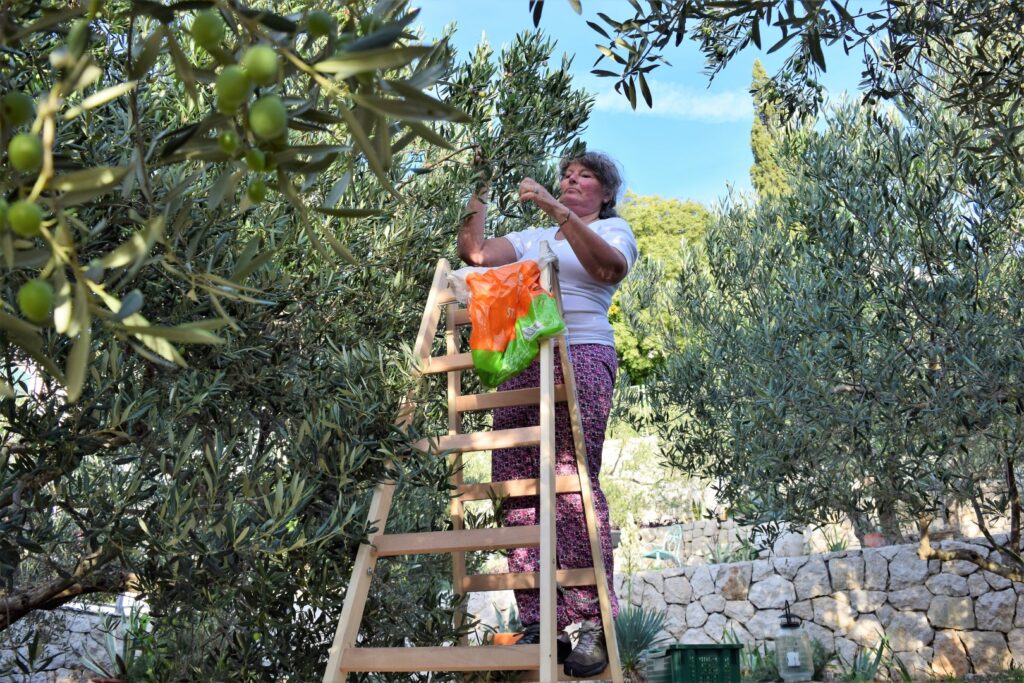
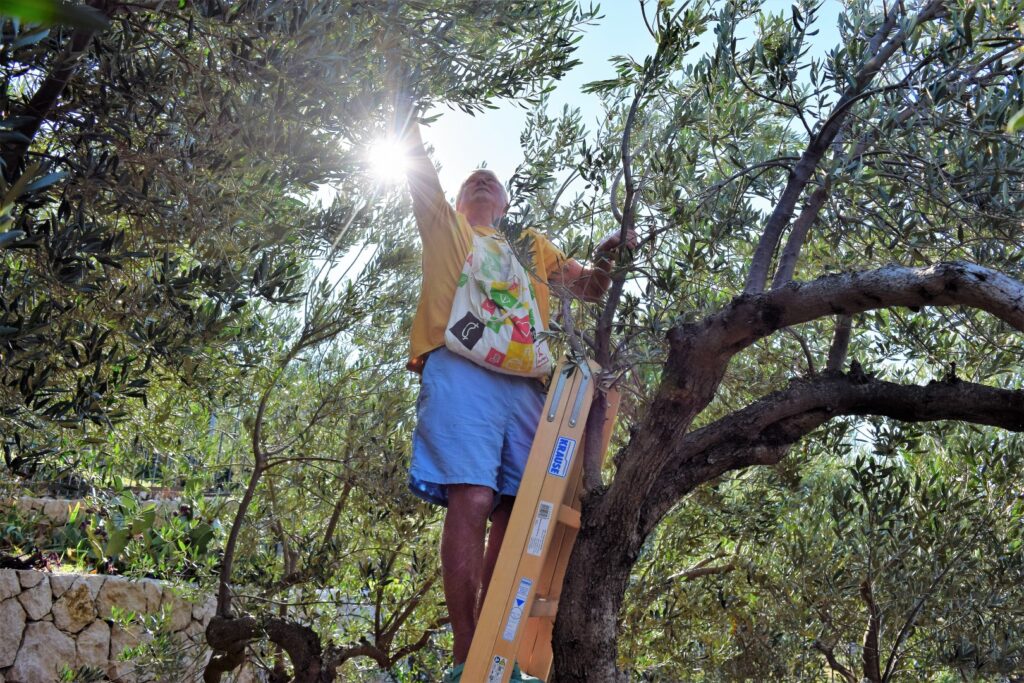
We have the best months of the garden all lined up ahead of us now from 1st May to enjoy … Happy Gardening !


Leave a Reply